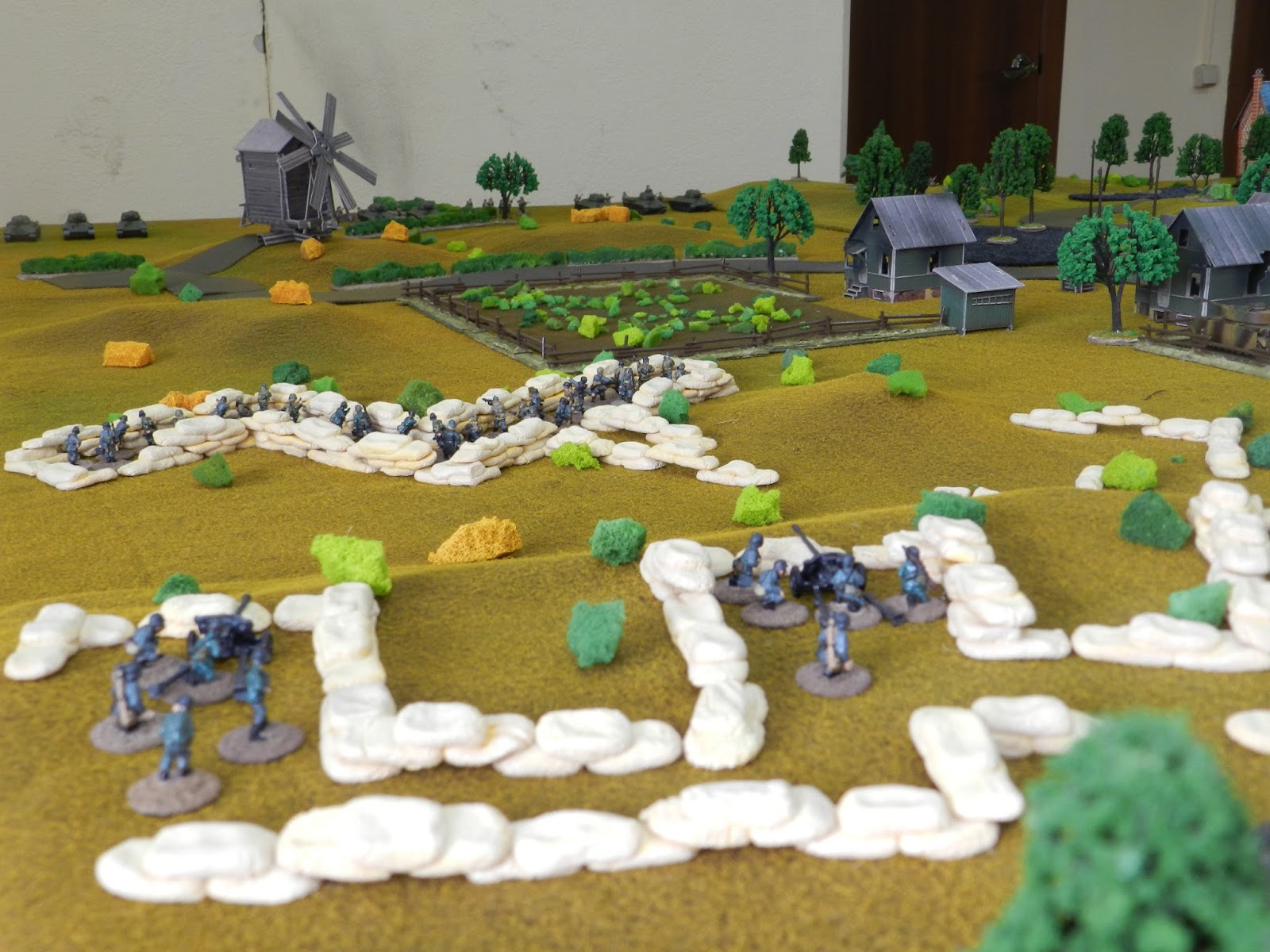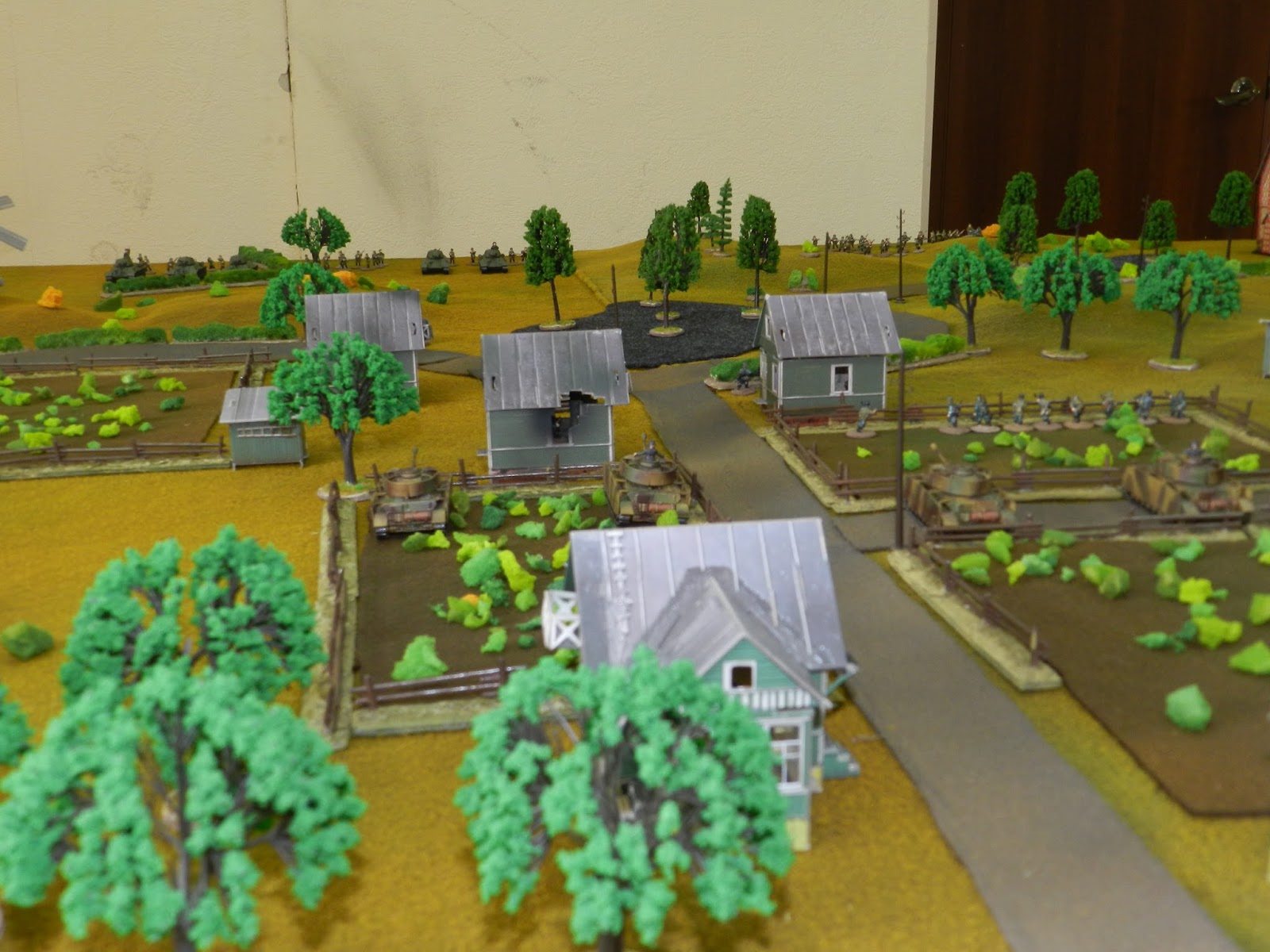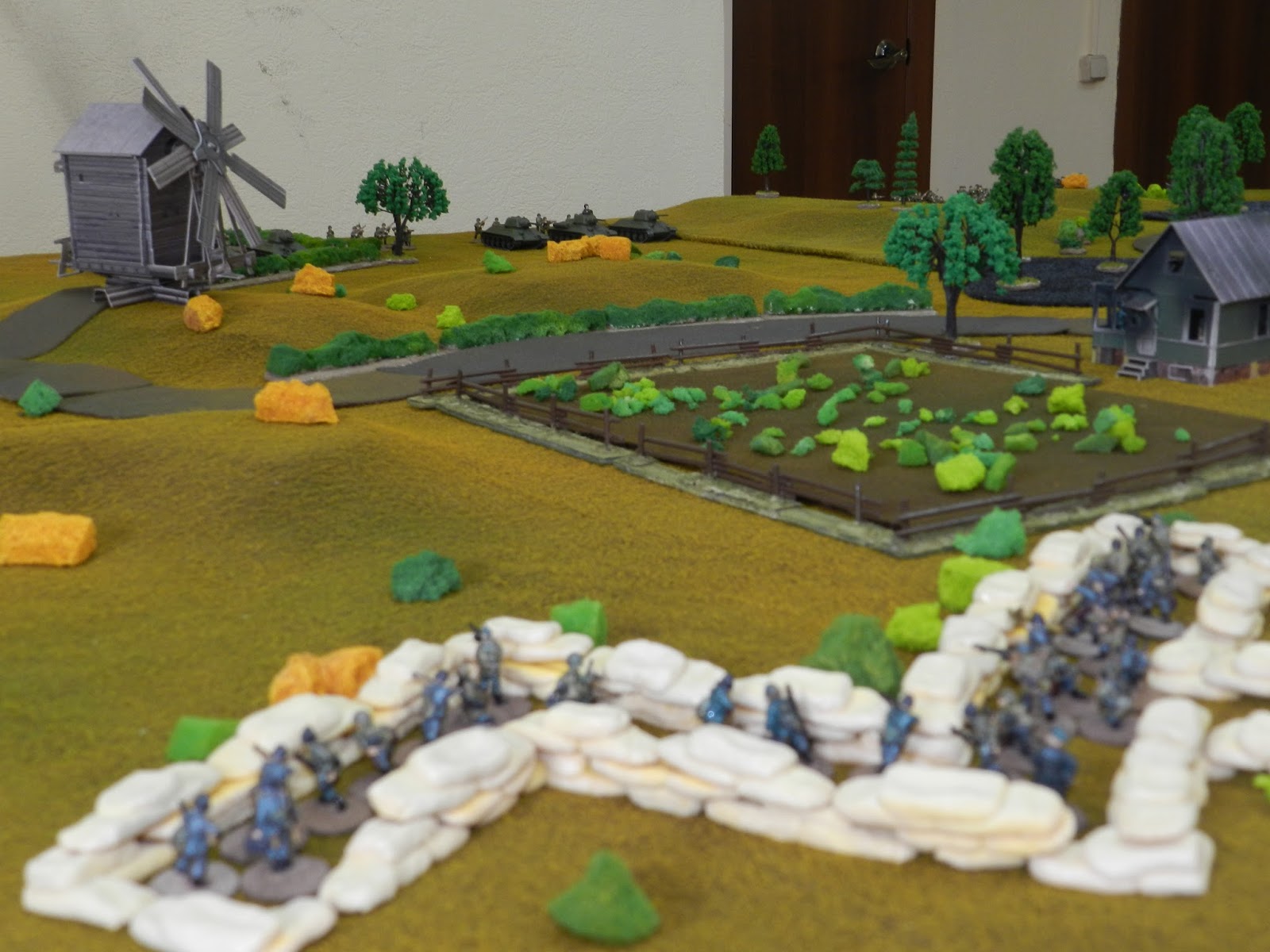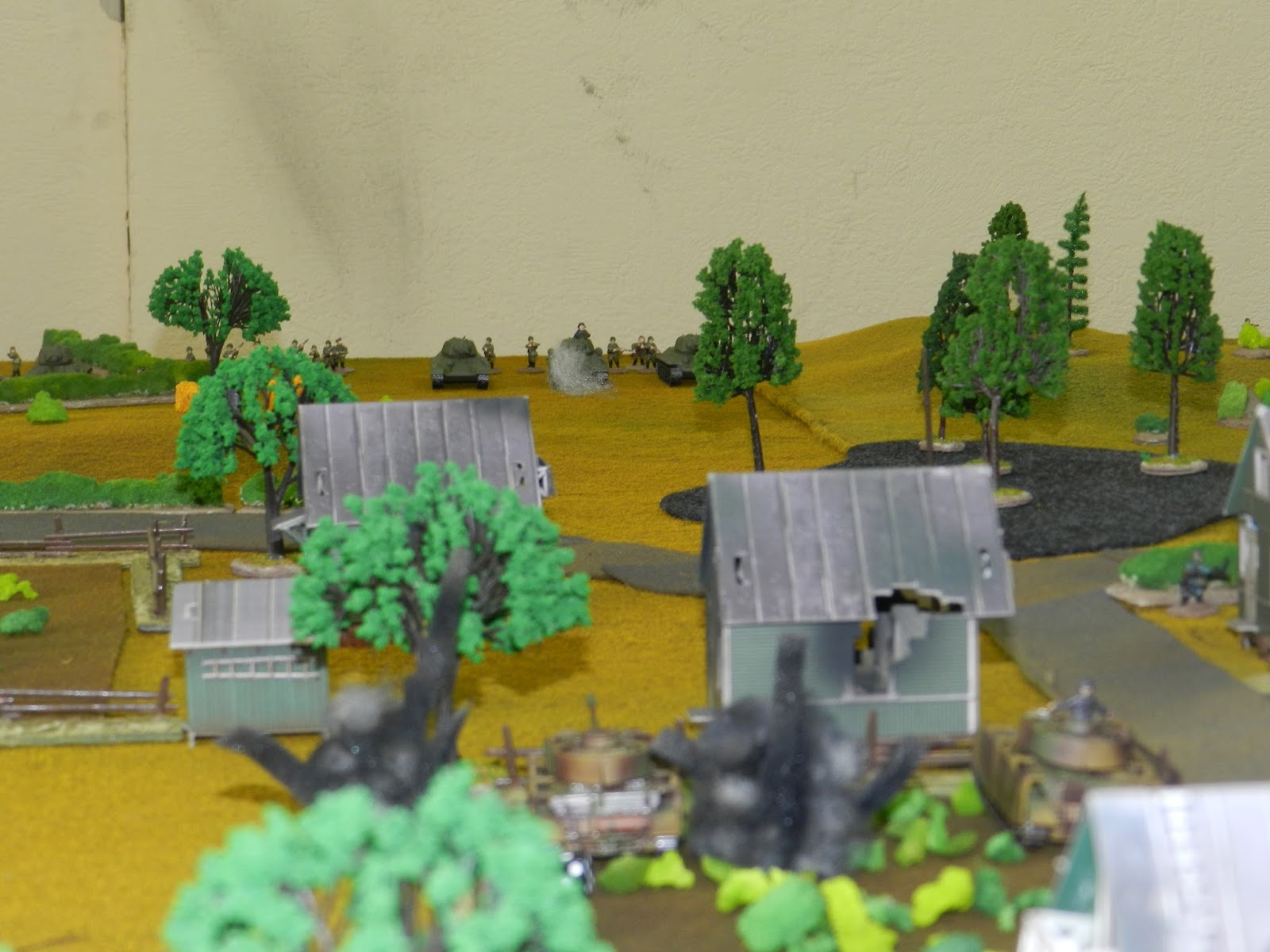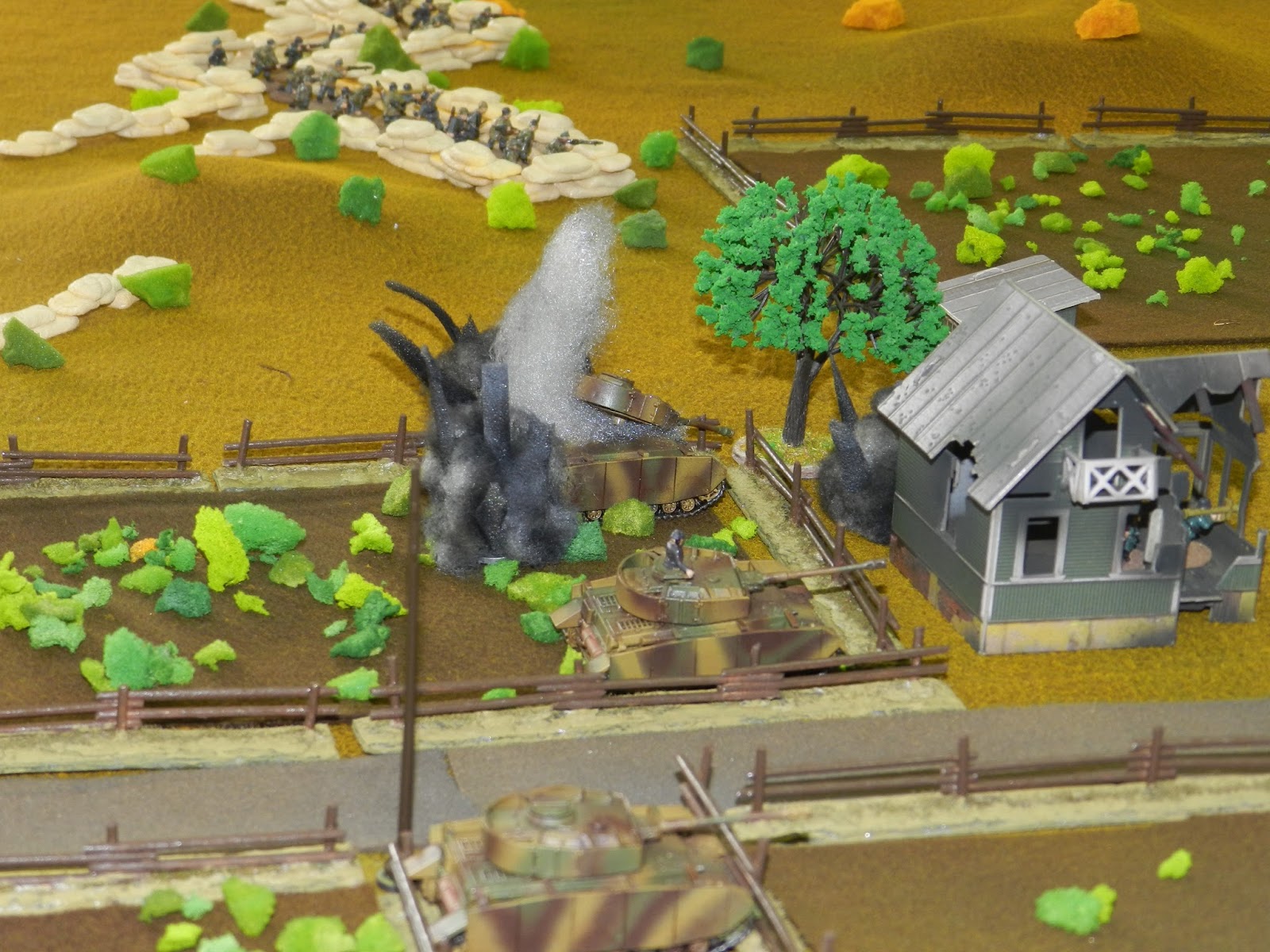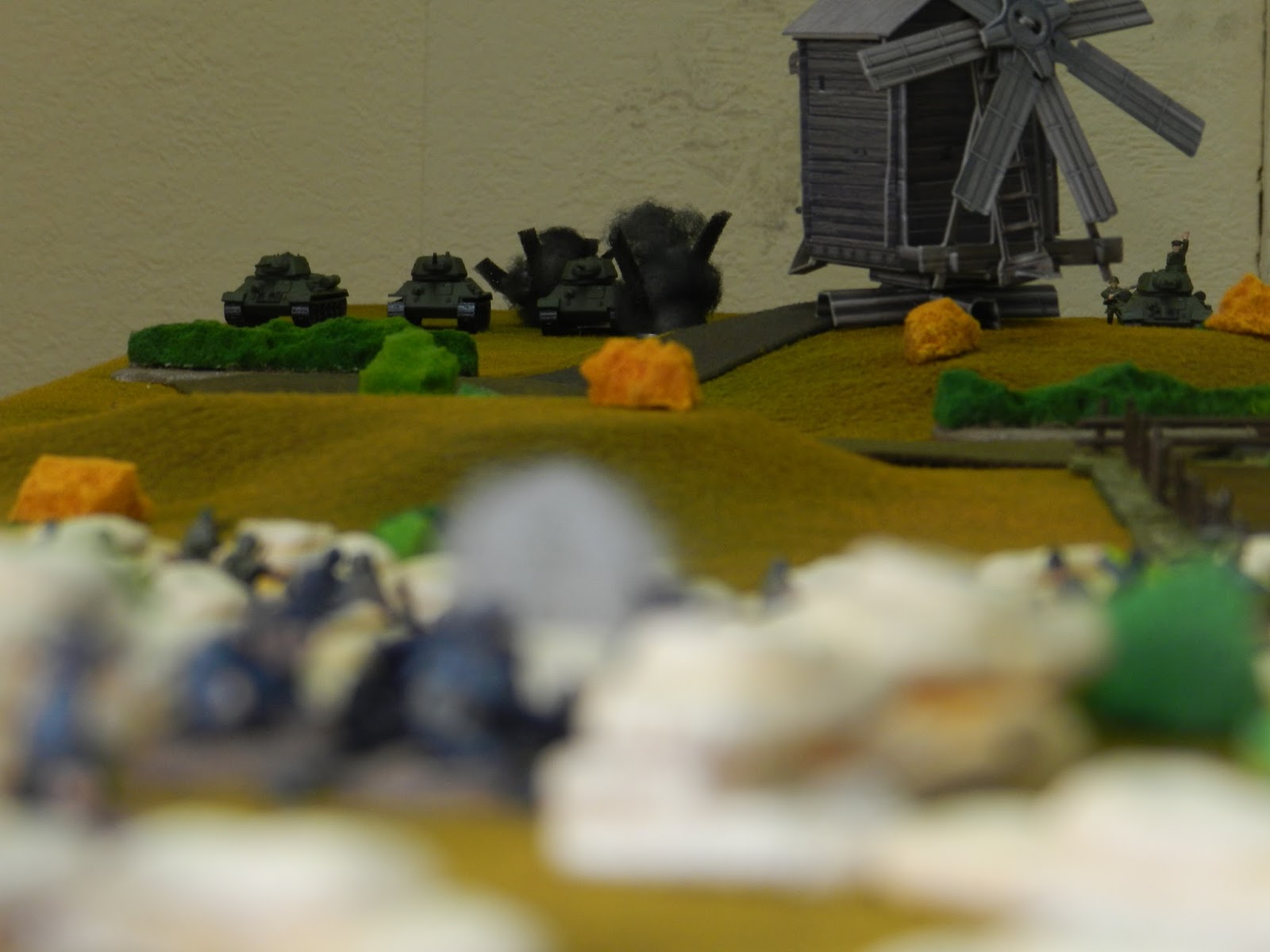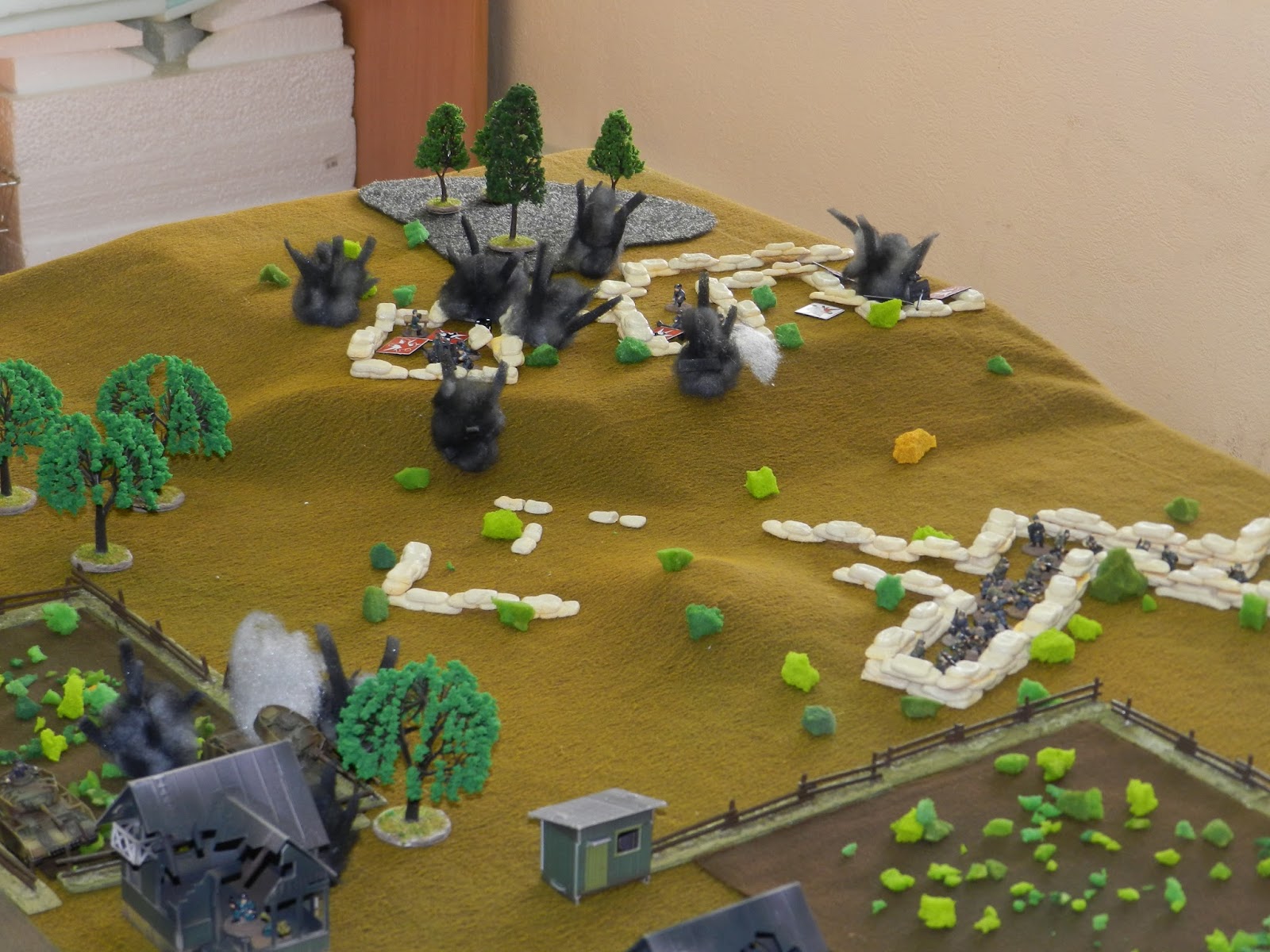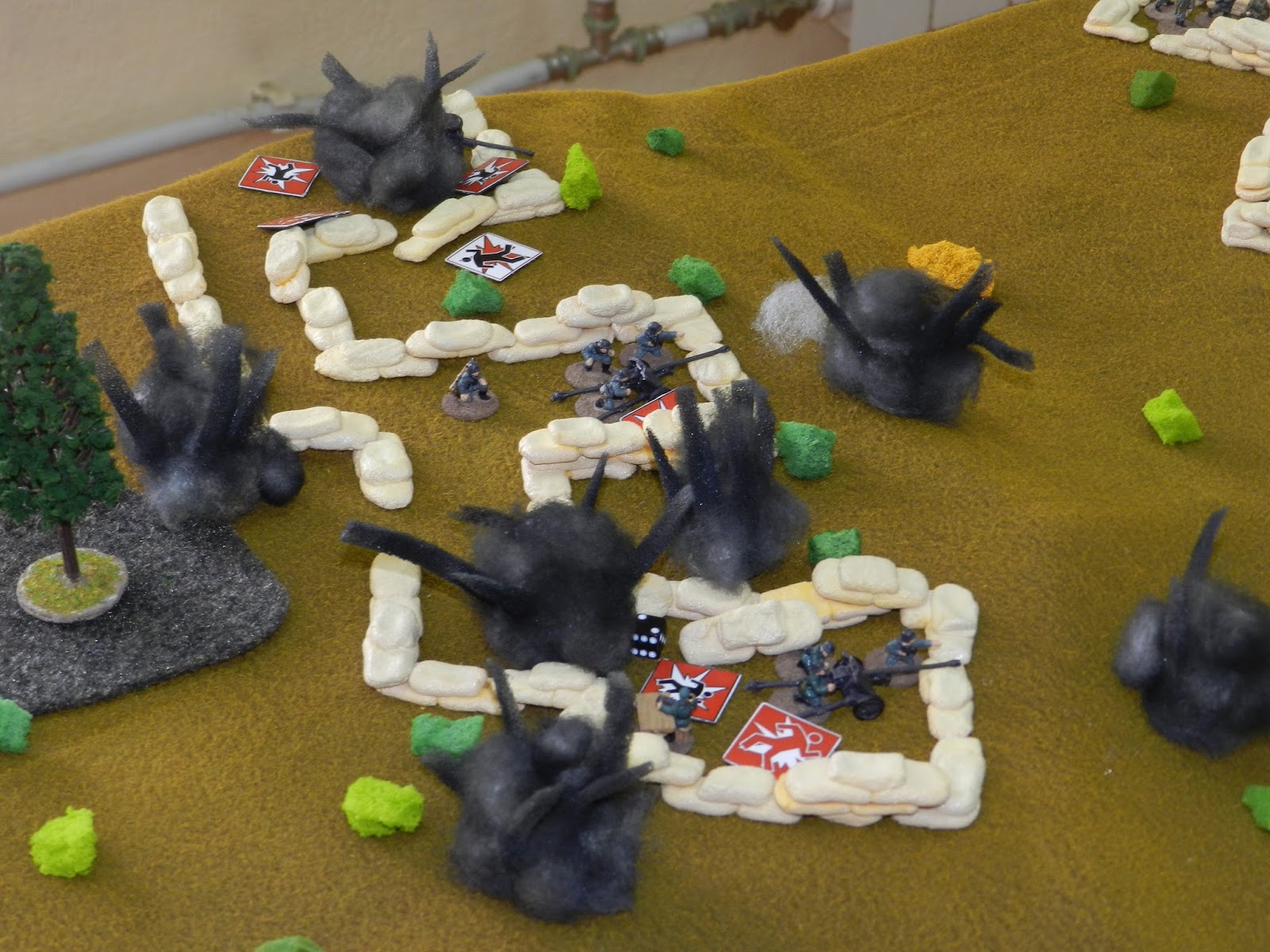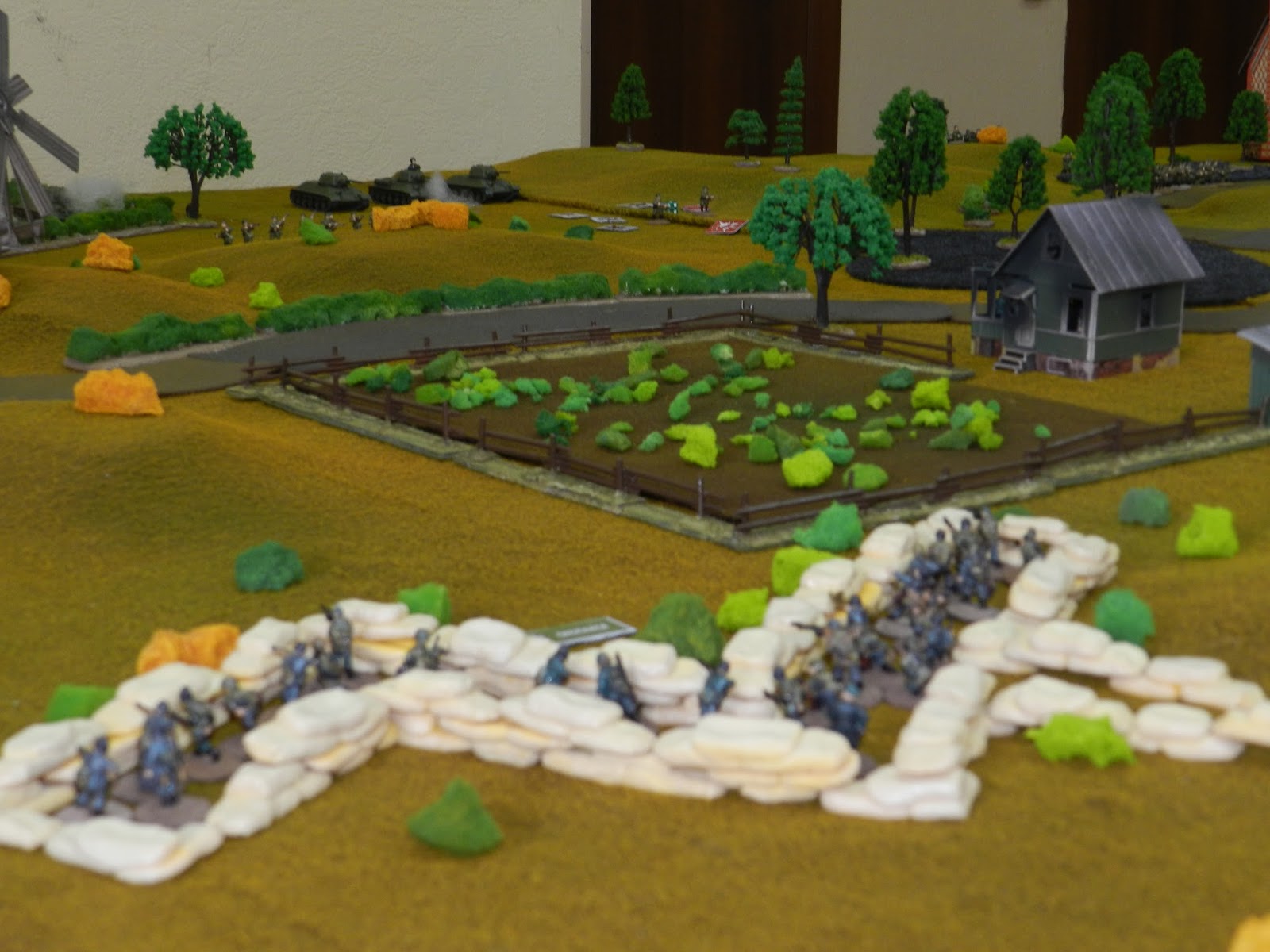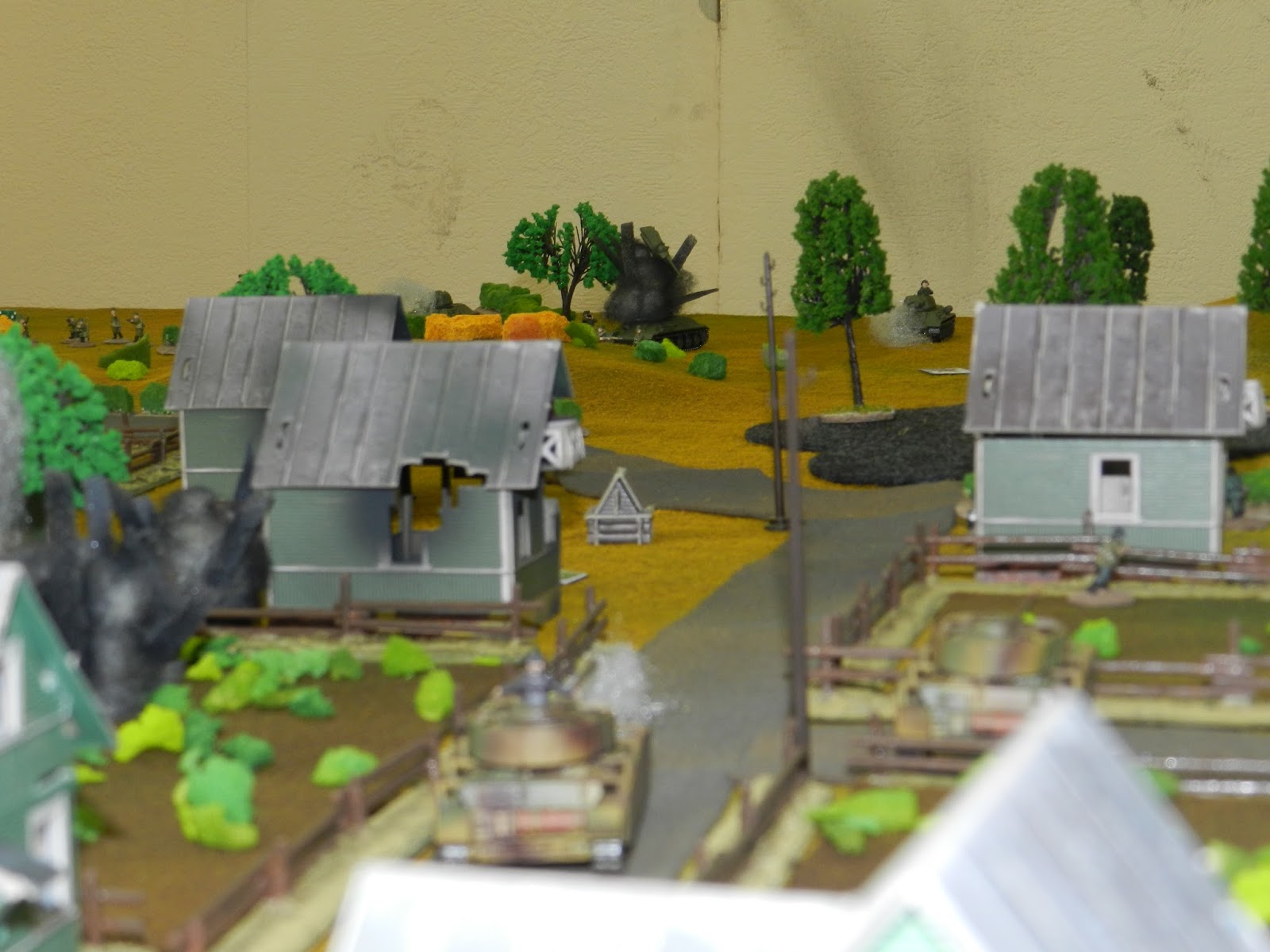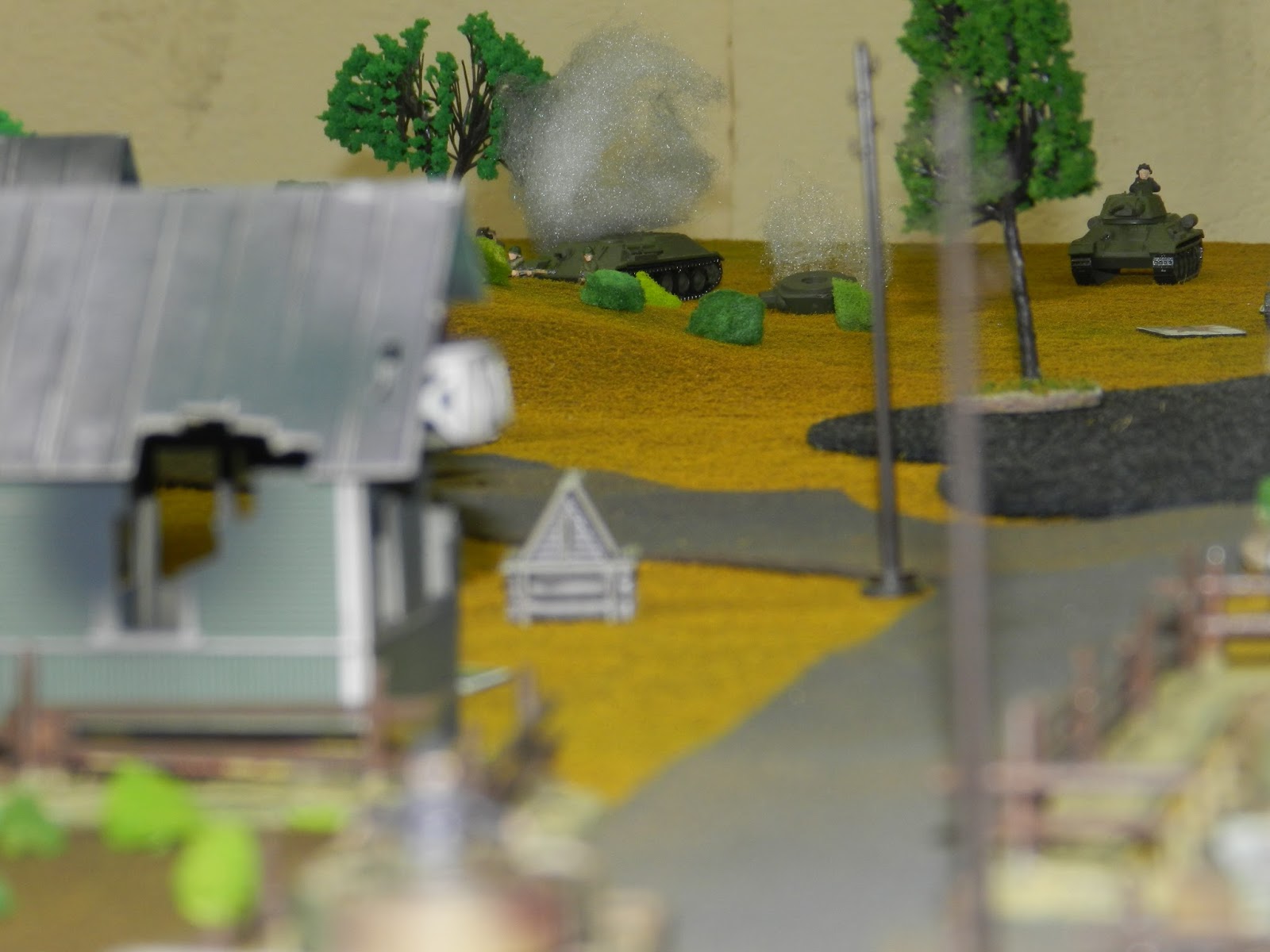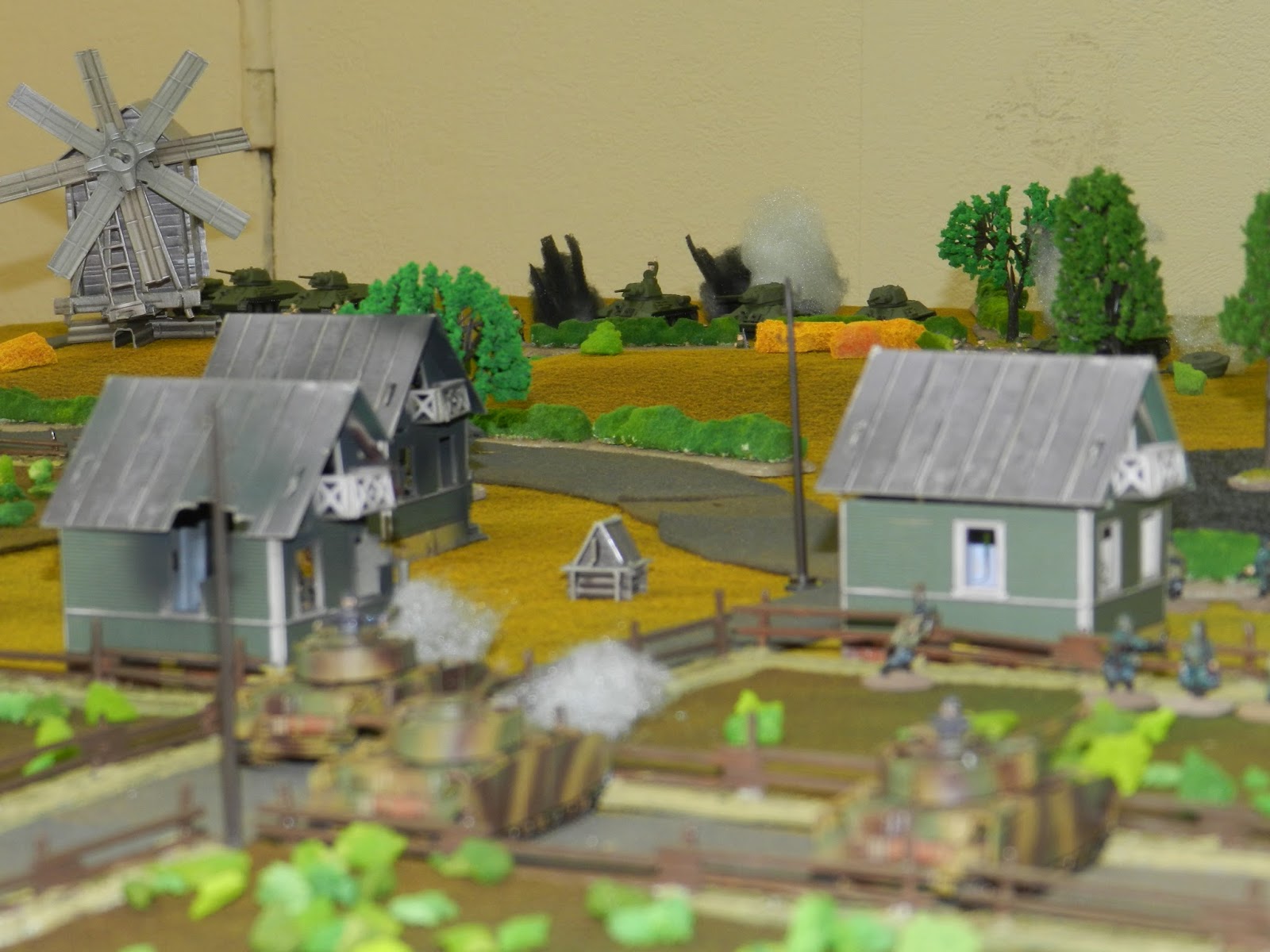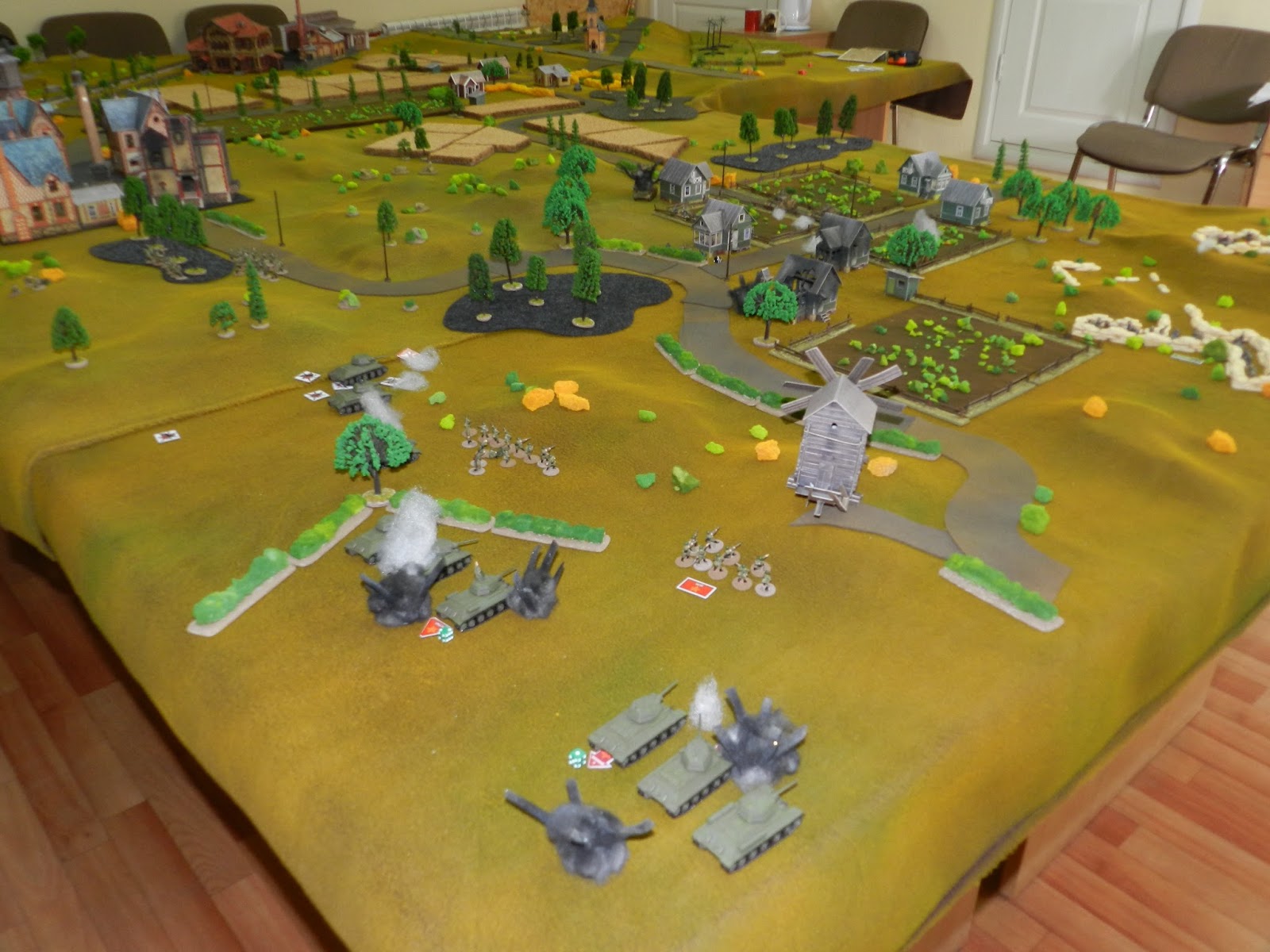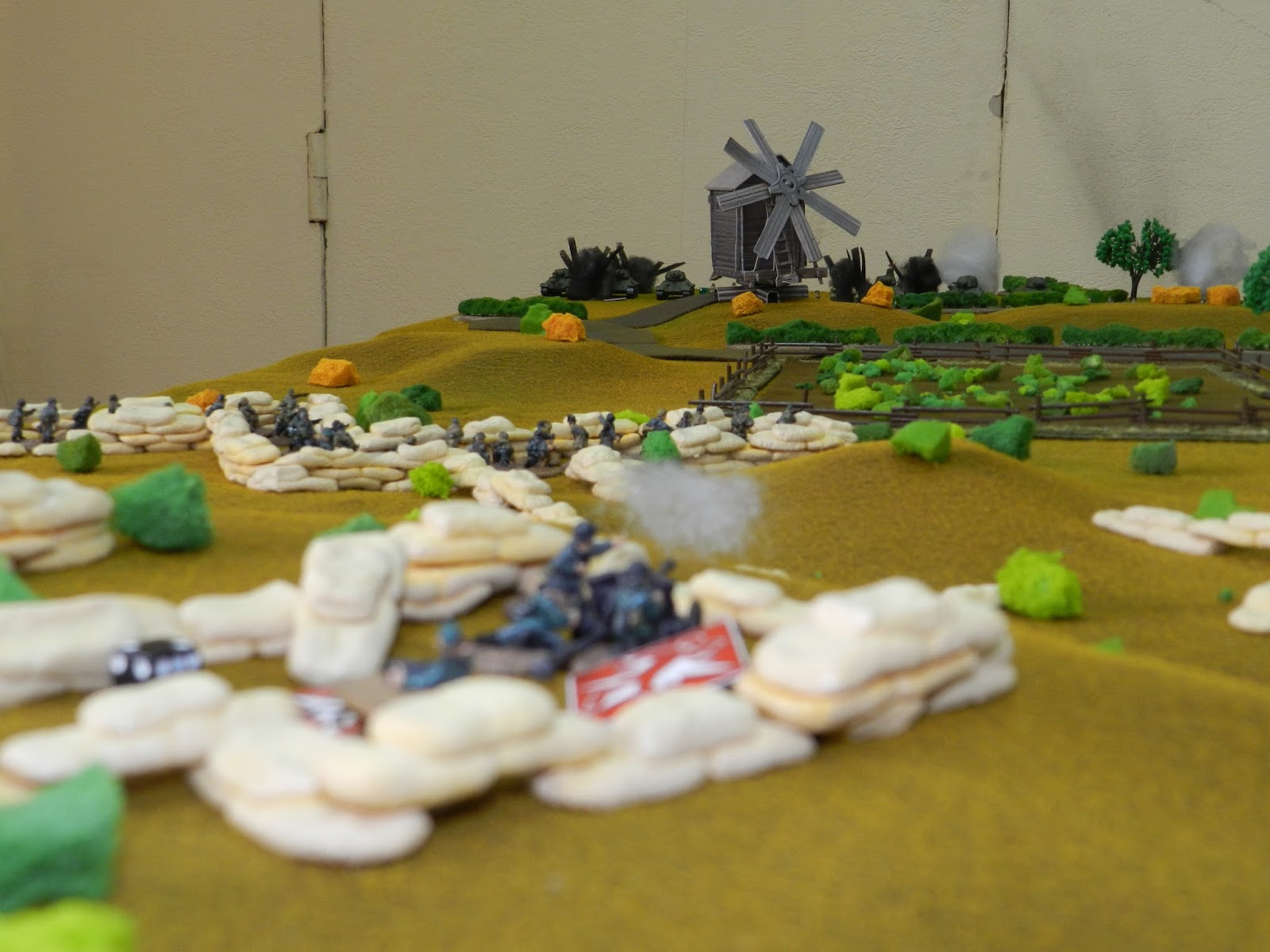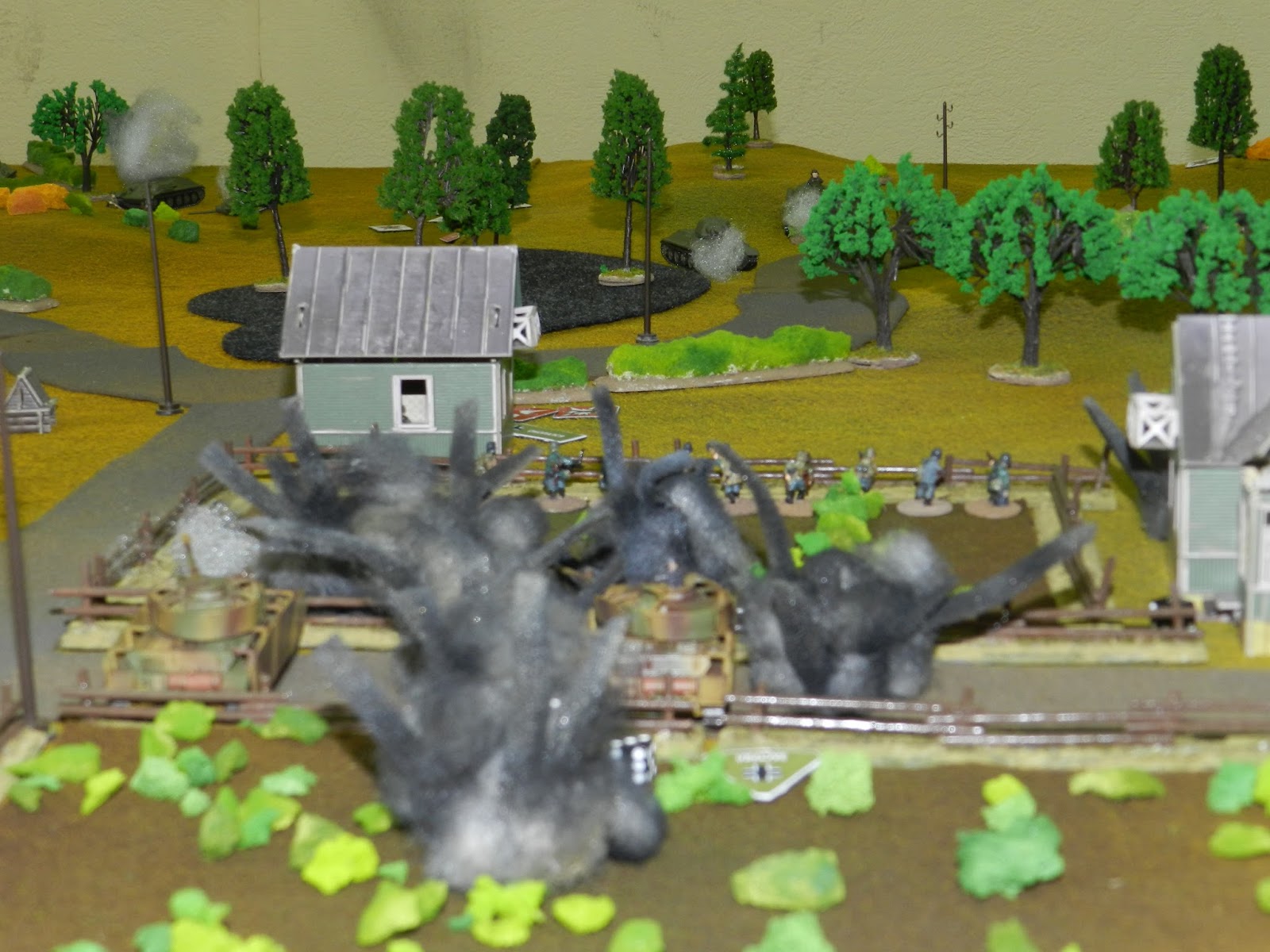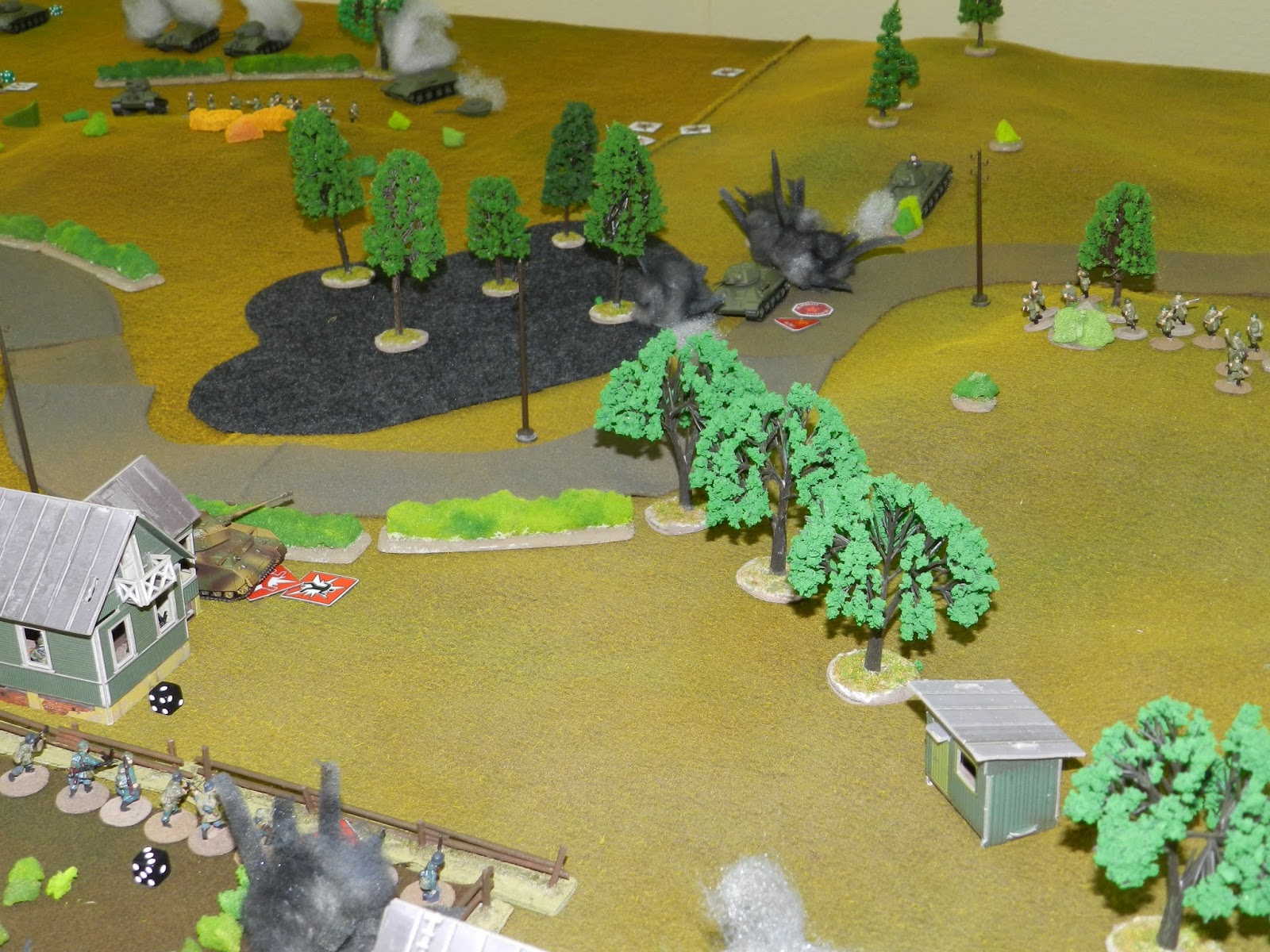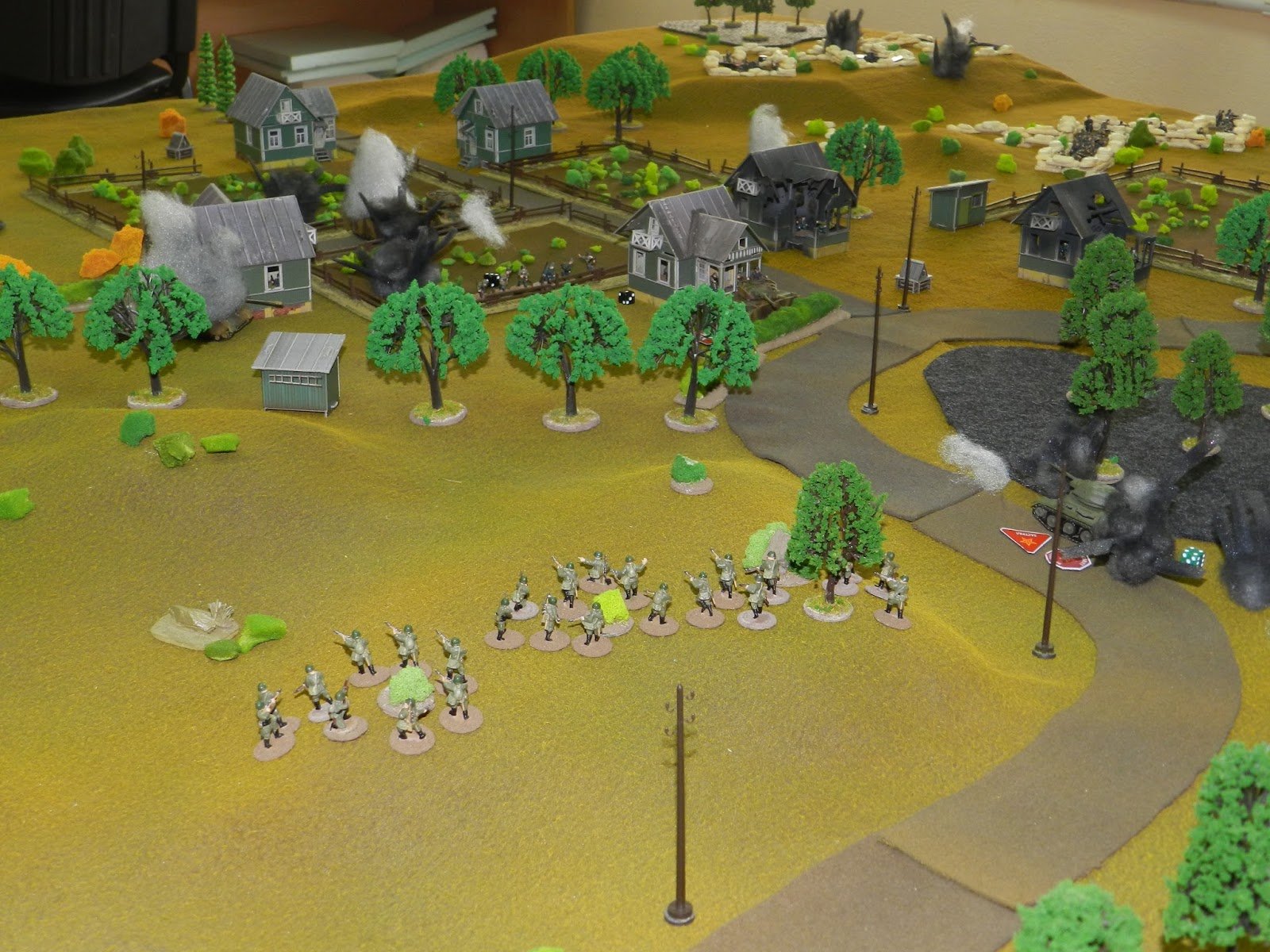After spending an hour first thing softening up the enemy's defences with an artillery barrage, Soviet troops launched their main attack. Before noon, after the first wave of infantry divisions had wedged themselves into the main German defensive line, advanced brigades of the tank army entered the battle to complete the breakthrough.
Their orders were to defeat the enemy's second line of defence, thus creating favourable conditions for the development of a strategic offensive into the German rear. Specifically, by the end of the day, the tanks had to advance and overcome a small, dug-in enemy unit, getting at least four of their five platoons off the opposite edge of the gaming table, with losses not exceeding half of the initial composition of each platoon.
The enemy's defensive line consisted of a network of trenches connecting various strongpoints centred on a village. Although their main reserves were still unavailable, the defenders had had time to bring up a small number of tanks as reinforcements.
The Soviet company commander, carefully examining the German positions with his binoculars, determined the location of their troops and concluded that the Germans had prepared good positions around the settlement, therefore limiting his ability to effect a lightning breakthrough. They had also placed an artillery battery on a small hill, supporting their infantry, and designed to repulse any attacking armour at long range.
On the other side of the village, there was what looked like a reserve of German tanks, doubtless to be used in support of their infantry or to launch a counter-attack.
Without losing a moment, Soviet troops moved towards the enemy.
The Soviet tanks advanced to the edge of the village, followed by a line of infantry. Meanwhile, Maxim machine guns fired into the German trenches from the flanks.
The German tanks opened the firing, with the Soviets soon replying. Despite the fact that the German tanks were largely hidden by the terrain, one of their number went up in flames.
The German battery on the hill sent a hail of shells onto the Soviet tanks: two of which ground to a halt. Return fire silenced one gun, its crew either blown up or sent scurrying away, but the rest of the battery could not be suppressed despite the weight of fire coming its way.
As the Soviet infantry approached the German line, one of their machine gunners opened fire and took out an entire German section. The Germans tried to hit back, but the machine gun's crew heroically kept firing.
Suddenly there was a huge explosion as one of the Soviet tanks erupted into flame! The commander of the German tank platoon had calmly waited for the Soviet tank to be clearly visible in hit sights, carefully aimed, and hit the tank dead on. The Soviet tank didn't stand a chance: too many successful penetrations and, as a result, the tank's ammunition store exploded!
Realizing that their infantry could not cross the open ground in front of the German positions, the Soviet tankmen desperately renewed their attack, but their enemy was quicker off the mark.
The German battery opened fire on the tanks again. One tank's driver is killed and it's engine damaged beyond repair. Meanwhile, the German tank platoon commander is firing incredibly accurately: another Russian tank burns, and another immobilised. The Soviet infantry hits the deck and lies on the reverse slope of the hills.
To divert the enemy's attention, the Soviet commander directed two tanks to the left flank. The Germans finished off the immobilized tank, then unsuccessfully tried to manoeuvre one of their tanks through the mud to cover the flank. A dry shot and a loud clap - one more kill!
The German battery is bombarded with aimed fire: the battery commander is killed, the gun crews suffer heavy losses, the battery is suppressed...but still represents a deadly threat.
Under the cover of two tanks on the left flank, the Soviet infantry finally launches their attack. Another German tank is hit, and the German infantry is losing ground: it seems that the situation is stabilizing for the Soviets.
The German tank ace, not phased by the apparent reverses, changes his position and goes to the shooting range.
Shot! The shell hits the engine, and another Soviet tank is immobilized, the crew shell-shocked. The Soviet tankers are disoriented: the Germans are acting boldly and decisively.
Shot! A Soviet tank's gun is jammed! Another shot, and a sharp tongue of flame emerges from another Soviet tank. The second German tank also destroyed another Soviet tank.
By the end of the day, the Soviet troops are convinced that they cannot break through the village and bypass the key enemy defences, and begin withdrawing. By the end of the battle, most of the German forces were remained intact, and the village remained in German hands.
Thoughts
Clear rules make the game move along cheerfully. Activation of units depends on luck, and sometimes a turn ends before every unit has activated. This makes things chaotic rather than strictly linear, and there are also bonus events on top of this. This means you have to think before starting anything that will take more than one action: for example, is it worthwhile sending the infantry forward out in the open if they might get stuck there?
The rules are company-sized, but you can play at least at regimental level. In the game, one soldier equals one man, one model equals one tank: imagine getting a whole German tank battalion onto the table...
This isn't in my opinion, a set of rules made for tournaments: for example, there is no points system covering differences in armament, different skills, the experience of soldiers, list size, etc. In the battle you choose troops based on lists from their nationality. And everything is quite arbitrary: it is possible to change everything for a particular scenario from how a platoon is armed right the way up to the experience of tank crews...provided the scenario justifies it. All you need is the agreement of your opponent. The historical scenarios provided generally suggest fighting off ten tanks and a full company with one anti-tank gun and a handful of soldiers. And the most interesting thing is that even if you have a preponderance in tanks and infantry, you cannot simply expect to win: maybe most of your troops never arrive!
The game has no maximum range of fire. There is a Close range, Effective range, and after that there are no restrictions. From table edge to table edge, if you see the enemy, you can shoot at him. As a result, an active firefight can begin on the first move of the game. However, to ensure that the game does not bog down to firefights at long distances, missions set specific tasks and deadlines for their completion.
The game has a hidden movement system, but we didn't test this. Perhaps this has already been considered and I'm wrong, but it seems to me that the element of hidden manoeuvre in the game done this way (paper Blinds on the table) spoils how the game looks. I prefer the "hidden manoeuvre" in CoS.
We were surprised that the game does not require a lot of dice to determine the results of shooting. After FoW with 20+ dice, it seems unusual to throw one or two dice only. And the fact that you have to consult a table to determine whether you hit or not can be a pain.
Sometimes games of this scale lack mechanisms to deal with disabling rather than destroying tanks, or killing an artillery piece's individual crew members, but not in this game. In our game we had a duel between the Soviet and German tankers: after the first shot, the chassis was broken, the engine was damaged and stalled, but the crew was still fighting, not everything was lost! The next shot led to the damage to the gun sights, making it more difficult to hit anything, and the crew was shell-shocked. Another hit and the tank brewed up, the commander is killed. Another time, a tank's main gun jammed: the tank no longer represented a formidable combat unit and, as a target, was not interesting, but it wasn't destroyed.
The same with infantry: there is no need to kill everyone. The loss of 2-3 soldiers in a unit greatly affects its effectiveness, which makes it much harder for them to carry out their assigned combat mission. Yes, one soldier can display an act of heroism, but the rule is that one individual trying something in the field does not work very often.
Some things do make the game complex: you have to constantly keep in mind the number of Actions available to each squad or vehicle. You need to know what strike value each tank has and/or whether a unit has lost casualties etc. The problem can probably be solved by using info cards or by the "friendly" atmosphere of the game (until the furious duel of gambling players of the tankers begins!). But here's what you can not do at all: it's to show newcomers such a wargame with a historical miniature. They are horrified by all the mathematical calculations and rules. Modifiers, indicators, etc.
Valderech


